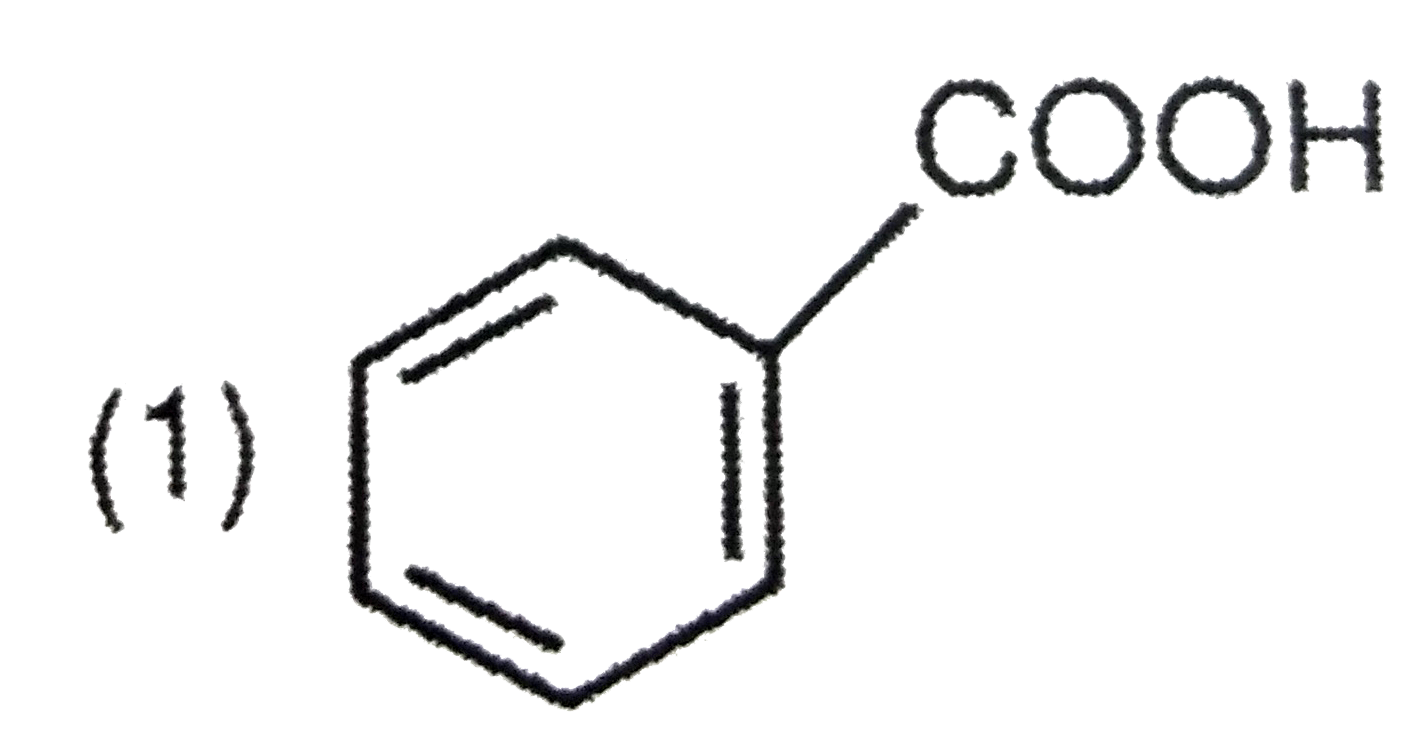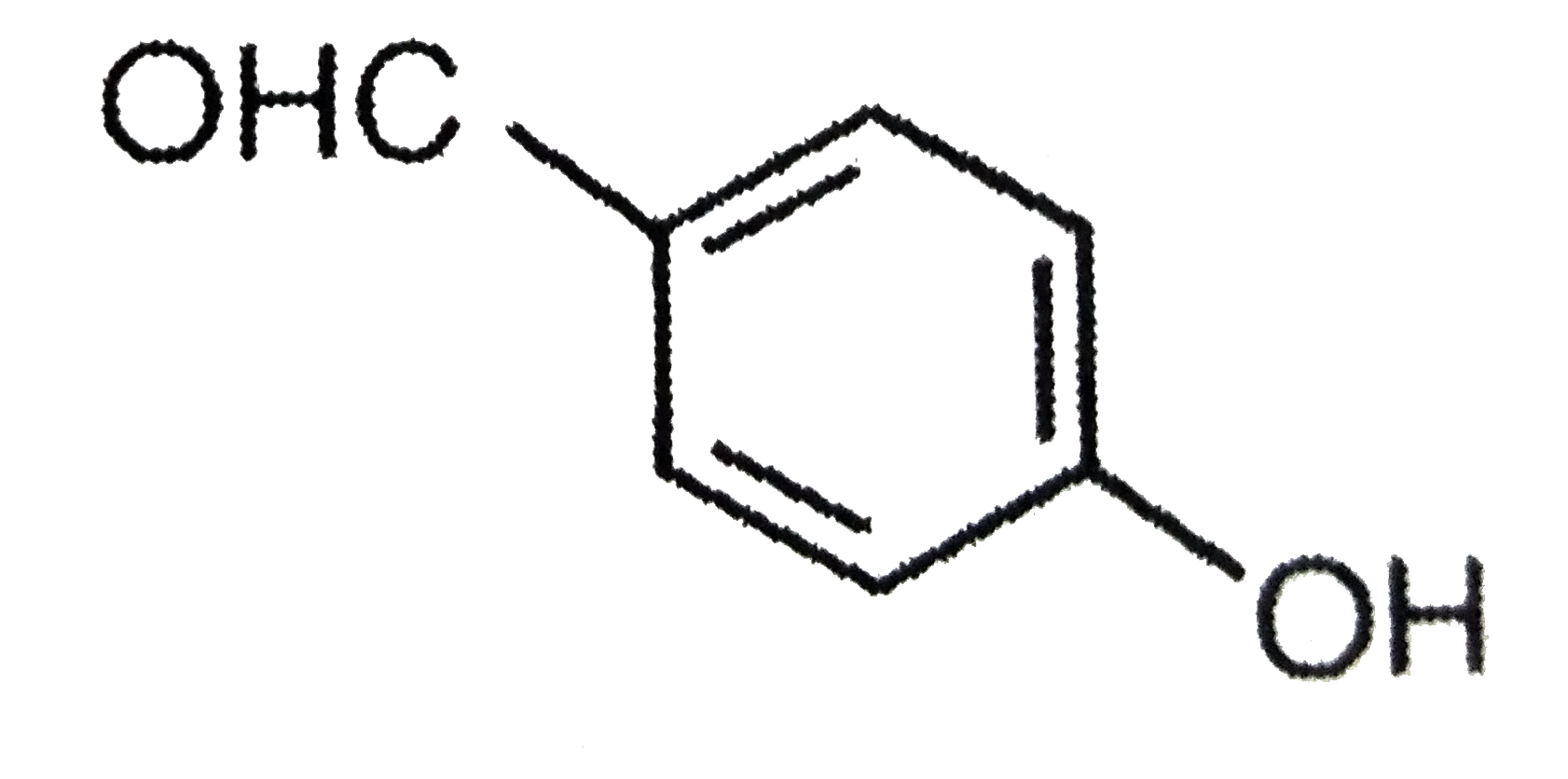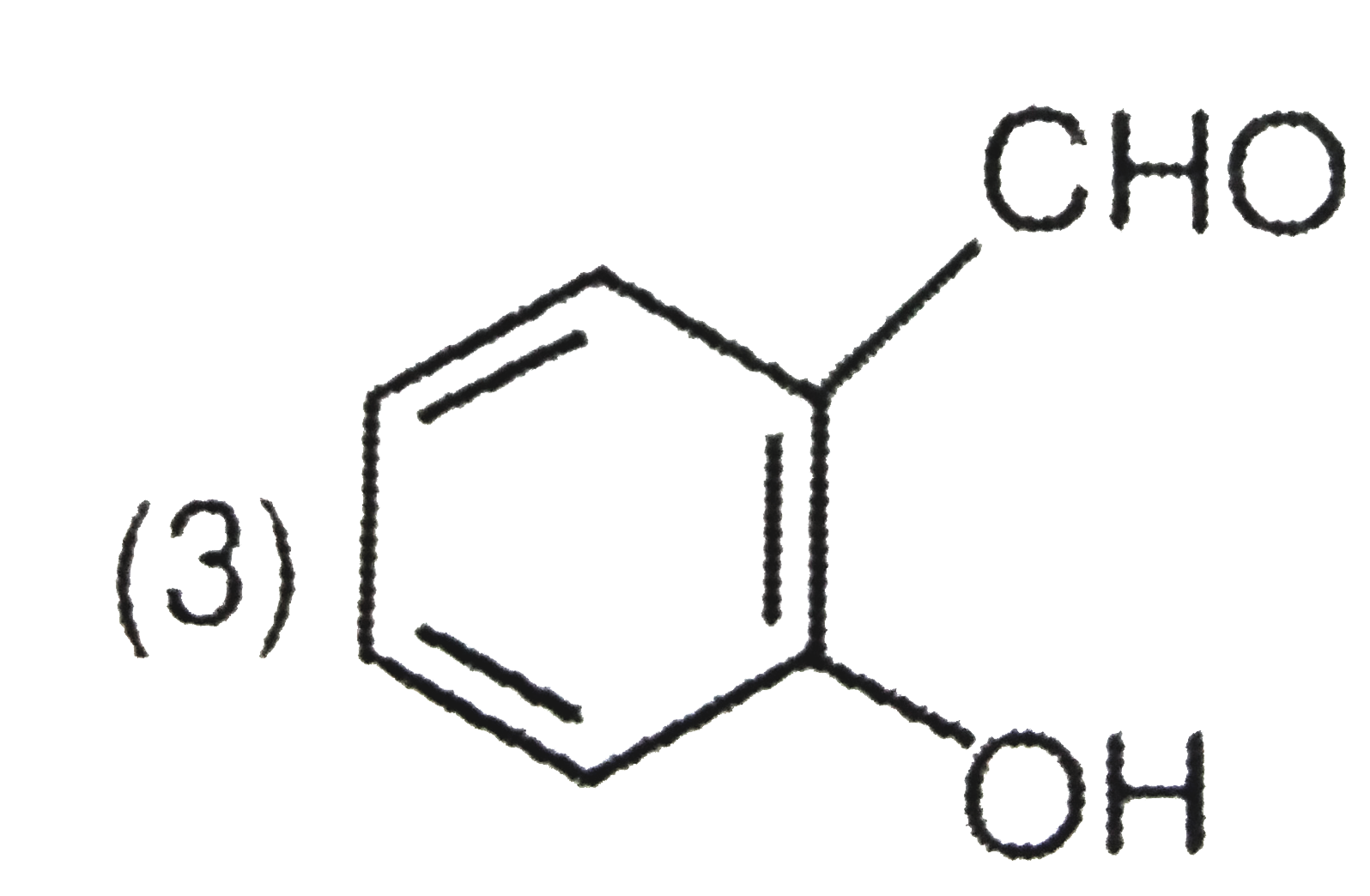An organic compound 'A' having molecular formula C6H6O gives a characeristic colour with aqueous FeCl3 solution. When 'A' is treated with CO2 and NaOH at 400K under pressure, compound 'B' is obtained. The compound 'B' upon acidification gives compound 'C' which reacts with acetyl chloride to form 'D'. It is a polular pain killer. Deduce the structures of A, B, C and D.
To solve the problem step by step, we will identify the compounds A, B, C, and D based on the given information.
Step 1: Identify Compound A
- The molecular formula of compound A is C6H6O.
- Given that it gives a characteristic color with aqueous FeCl3 solution, we can conclude that compound A is phenol.
- Structure of A:
- Phenol has the structure:
C6H5OH
Step 2: Identify Compound B
- Compound A (phenol) is treated with CO2 and NaOH at 400 K under pressure, which indicates a Kolbe's electrolysis reaction.
- The product of this reaction is ortho-salicylic acid (or 2-hydroxybenzoic acid).
- Structure of B:
- The structure of ortho-salicylic acid is:
C6H4(OH)(COOH)
Step 3: Identify Compound C
- When compound B (ortho-salicylic acid) is acidified, it remains the same as ortho-salicylic acid, but we can denote it as compound C for clarity.
- Structure of C:
- The structure of compound C is:
C6H4(OH)(COOH)
Step 4: Identify Compound D
- Compound C (ortho-salicylic acid) reacts with acetyl chloride (CH3COCl) to form compound D.
- The reaction involves the acetylation of the hydroxyl group, leading to the formation of aspirin.
- Structure of D:
- The structure of aspirin (acetylsalicylic acid) is:
C9H8O4
- The structural formula is:
C6H4(OCOCH3)(COOH)
Summary of Structures
- A (Phenol): C6H5OH
- B (Ortho-salicylic acid): C6H4(OH)(COOH)
- C (Ortho-salicylic acid): C6H4(OH)(COOH)
- D (Aspirin): C9H8O4 or C6H4(OCOCH3)(COOH)
- The molecular formula of compound A is C6H6O.
- Given that it gives a characteristic color with aqueous FeCl3 solution, we can conclude that compound A is phenol.
- Structure of A:
- Phenol has the structure:
C6H5OH
- Compound A (phenol) is treated with CO2 and NaOH at 400 K under pressure, which indicates a Kolbe's electrolysis reaction.
- The product of this reaction is ortho-salicylic acid (or 2-hydroxybenzoic acid).
- Structure of B:
- The structure of ortho-salicylic acid is:
C6H4(OH)(COOH)
- When compound B (ortho-salicylic acid) is acidified, it remains the same as ortho-salicylic acid, but we can denote it as compound C for clarity.
- Structure of C:
- The structure of compound C is:
C6H4(OH)(COOH)
- Compound C (ortho-salicylic acid) reacts with acetyl chloride (CH3COCl) to form compound D.
- The reaction involves the acetylation of the hydroxyl group, leading to the formation of aspirin.
- Structure of D:
- The structure of aspirin (acetylsalicylic acid) is:
C9H8O4
- The structural formula is:
C6H4(OCOCH3)(COOH)
- A (Phenol): C6H5OH
- B (Ortho-salicylic acid): C6H4(OH)(COOH)
- C (Ortho-salicylic acid): C6H4(OH)(COOH)
- D (Aspirin): C9H8O4 or C6H4(OCOCH3)(COOH)
Topper's Solved these Questions
- ALCOHOLS AND PHENOLSBOOK - DINESH PUBLICATIONCHAPTER - ALCOHOLS AND PHENOLSEXERCISE - PROBLEM FOR PRACTICE
39 Videos
- ALCOHOLS AND PHENOLSBOOK - DINESH PUBLICATIONCHAPTER - ALCOHOLS AND PHENOLSEXERCISE - ASSIGNMENT
46 Videos
- ALCOHOLS AND PHENOLSBOOK - DINESH PUBLICATIONCHAPTER - ALCOHOLS AND PHENOLSEXERCISE - HIGHER ORDER THINKING SKILLS
8 Videos
- ALDEHYDES AND KETONES BOOK - DINESH PUBLICATIONCHAPTER - ALDEHYDES AND KETONES EXERCISE - Interger
5 Videos
Similar Questions
An organic compound (A) with molecular formula C6H6O gives a characteristic colour with aqueous FeCl3 solution. When (A) is treated with CO2 and NaoH at 410 K under pressure, it gives compound (B) which upon acidification gives compound (C). compound (C) reacts with acetyl chloride to give (D) which is a popular pain killer. deduce the structure of (A), (B), (C) and (D) and explain all the reaction involved.
View SolutionAn organic compound 'A' having molecular formula C6H10O gives a characteristic colour with aqueous FeCl3 solution. When 'A' is treated with CO2 and NaOH at 400K under pressure. 'B' is obtained. B on acidification gives C when C treated with CH3COCl gives a popular pain killer D. Deduce the strucutrues of A,B,C and D.
View Solution
Knowledge Check
An organic compound with molecular formula C6H6O dissolves in NaOH and gives characteristics colour with neutral FeCl3. On treatment with bromine water it gives tribromoderivative. The compound is,
AalcoholsBketonesCethersDphenolAn aromatic compound 'A' having molecular formula C7H6O2 on treating with aqueous ammonia and heating forms compounds 'B'. The compound B on reaction with molecular bromine and potassium hydroxide provides compound 'C' having molecular formula C6H7N. The structure of 'A' is :
A B
B C
C D
D
Two isomeric aromatic compounds A and B have the molecular formula C7H7OH. A gives purple colour with FeCl3 solution while B does not. What are A and B ?
View SolutionAn organic compound (A) has 76.6% C and 6.38% H. Its vapour density is 47. It gives characteristic colour with FeCl3 solution. (A) when treated with CO2 and NaOH at 140∘C under pressure gives (B) which on acidification gives (C ). (C ) reacts with acetyl chloride to give (D) which is a well known pain killer. Identify (A), (B), (C ), (D) and explain the reactions involved.
View SolutionAn organic compound (A) has 76.6% C, 6.38% H. Its vapour density is 47. It gives characteristic colours with FeCl3 solution. (A) when treated with CO2 and NaOH at 120∘C under pressure gives (B) which on acidification gives (C). (C) reacts with acetyl chloride to give (D) which is a well known pain killer. Identify (A), (B), (C) and (D) and also explain the reactions.
View SolutionAn organic compound (A) has 76.6% C and 6.38% H. its vapour density is 47. it gives characteristic colour with FeCl3 solution. (A) when treated with CO2 and NaOH at 140∘ C under pressure gives (B) which on being acidified gives (C). (C) reacts with acetyl chloride to give (D) which is a well known pain killer. identify (A), (B), (C), (D) and explain the reactions involved.
View SolutionAn organic compound with molecular formula C6H12 upon ozonolysis gives only acetone as the product. The compound is :
View SolutionAn aromatic compound 'A' having molecular formula C7H6O2 on treating with aqueous ammonia and heating forms compound 'B'. The compound 'B' on reaction with molecular bromine and potassium hydroxide provides compound 'C' having molecular formula C6H7N. The structure of 'A' is
View Solution
